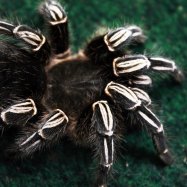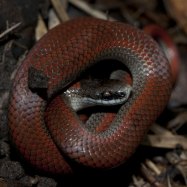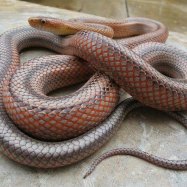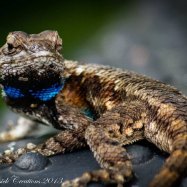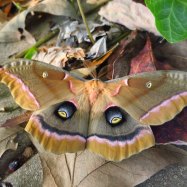
Havapoo
8-16 inches
If you're considering getting a pet, why not consider a Havapoo? This adorable hybrid breed is a mix of Havanese and Poodle, and can range from 8-16 inches in length. They are domesticated animals and belong to the Canidae family, making them great companions for any household. With a small to medium body shape, Havapoos are perfect for those looking for a compact and lovable pet.
Animal Details Summary:
Common Name: Havapoo
Kingdom: Animalia
Habitat: Terrestrial
The Adorable Havapoo: Characteristics, History, and Care Guide
What happens when you combine the intelligence and energy of a Poodle with the gentle and affectionate nature of a Havanese? You get the Havapoo - a lovable and versatile designer dog that has captured the hearts of many dog lovers. This crossbreed is quickly gaining popularity as a companion dog, and it's not hard to see why. In this article, we'll delve into the characteristics, history, and care guide of the beloved Havapoo.The Basics: What is a Havapoo?
The Havapoo, also known as Havadoodle or Poovanese, is a result of crossing a Havanese with a Poodle Havapoo. They are a relatively new breed, first recognized in the 1990s, and have quickly gained popularity in the United States. While their exact origins are still unknown, it is believed that they were developed to create a low-shedding, hypoallergenic dog with the desirable traits of both parent breeds.Physical Characteristics
The Havapoo is a small to medium-sized dog, with a height ranging from 8 to 16 inches and a weight of 7 to 20 pounds. Their body shape can vary depending on the size of the parent breeds, but they generally have a sturdy and compact body with long, floppy ears. They have a soft, wavy, and low-shedding coat that can come in a variety of colors, including black, white, brown, and cream. Their adorable appearance is complemented by their sweet and expressive eyes, making them irresistible to many.Personality and Temperament
The Havapoo is an affectionate and social dog that loves to be around their family. They have inherited their parent breeds' friendly and playful nature, making them great companions for families with children and other pets. They are also known for their intelligence and eager-to-please attitude, which makes them easy to train Honduran White Bat. However, they can also be stubborn at times, so consistent and positive reinforcement training is necessary.One downside to their friendly nature is that they do not make good watchdogs as they tend to welcome strangers with wagging tails. However, early socialization can help them become more comfortable around unfamiliar people and situations.
History and Country of Origin
As mentioned earlier, the exact origin of the Havapoo is unclear. However, it is believed that they were first developed in the United States in the late 20th century. As a designer breed, they were created to combine the desirable traits of both parent breeds. The Havanese is a toy breed that originated from Cuba and was popular among Cuban aristocracy. On the other hand, the Poodle, originally a water retriever, is known for its intelligence and low-shedding coat. Together, they make the perfect combination for creating a lovable and adaptable companion dog.Caring for Your Havapoo
Taking care of a Havapoo is relatively easy compared to other breeds. They require daily exercise, but their energy level is moderate, making them suitable for apartment living. A brisk walk or playtime in the yard will suffice to keep them physically and mentally stimulated. However, they do not do well in extreme weather conditions, so it's essential to keep an eye on them during hot or cold weather.Their low-shedding coat does not require much maintenance, but regular brushing will help prevent matting and keep it looking soft and shiny. They may also need occasional grooming to maintain their coat's length. Trimming of the hair around their eyes and ears is also necessary to prevent any eye or ear infections.
Additionally, their teeth should be brushed at least two to three times a week to prevent dental issues. Nails should also be trimmed regularly to keep them from getting too long and causing discomfort.
Health Concerns
With proper care and regular vet check-ups, the Havapoo can live up to 13 years or more. However, they are prone to certain health issues that potential owners should be aware of.Hip dysplasia, a condition where the hip socket doesn't fit the thigh bone tightly, is a common health concern in Havapoos. This can lead to discomfort and mobility issues if left untreated. Luxating patella or dislocated kneecap is also a common health concern in smaller dogs, including Havapoos.
They may also experience dental problems if their teeth are not properly cared for, which can lead to gum disease, tooth loss, and other oral health issues. It's crucial to keep an eye out for any signs of discomfort, such as excessive drooling or chewing on one side of the mouth, and schedule regular dental check-ups with the veterinarian.
Final Thoughts
The Havapoo is an adorable and lovable designer breed that has captured the hearts of many with its affectionate and playful personality. They make great family pets and are a popular choice for those looking for a companion dog. With proper care, love, and attention, the Havapoo will make a wonderful addition to any household. So if you're looking for a small, intelligent, and loving furry friend, the Havapoo might be the perfect match for you.
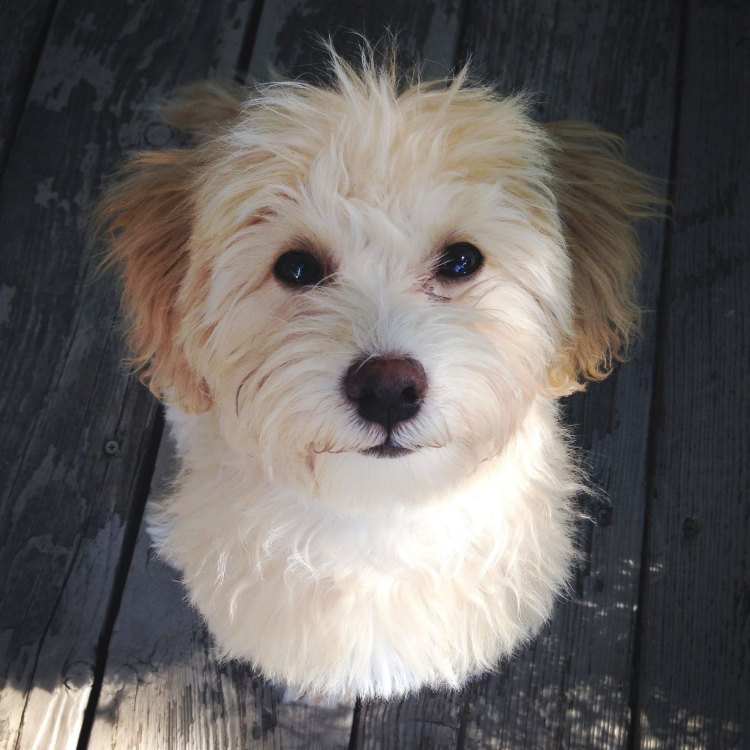
Havapoo
Animal Details Havapoo - Scientific Name: Canis lupus familiaris
- Category: Animals H
- Scientific Name: Canis lupus familiaris
- Common Name: Havapoo
- Kingdom: Animalia
- Phylum: Chordata
- Class: Mammalia
- Order: Carnivora
- Family: Canidae
- Habitat: Terrestrial
- Feeding Method: Omnivorous
- Geographical Distribution: Worldwide
- Country of Origin: United States
- Location: Domesticated
- Animal Coloration: Varies
- Body Shape: Small to Medium
- Length: 8-16 inches

Havapoo
- Adult Size: 10-15 pounds
- Average Lifespan: 12-16 years
- Reproduction: Sexual
- Reproductive Behavior: Live birth, mating
- Sound or Call: Barking
- Migration Pattern: Non-migratory
- Social Groups: Family units
- Behavior: Friendly, affectionate, playful
- Threats: None
- Conservation Status: Not applicable
- Impact on Ecosystem: None
- Human Use: Companion animal
- Distinctive Features: Soft and curly coat
- Interesting Facts: Havapoos are a cross between a Havanese and a Poodle
- Predator: None
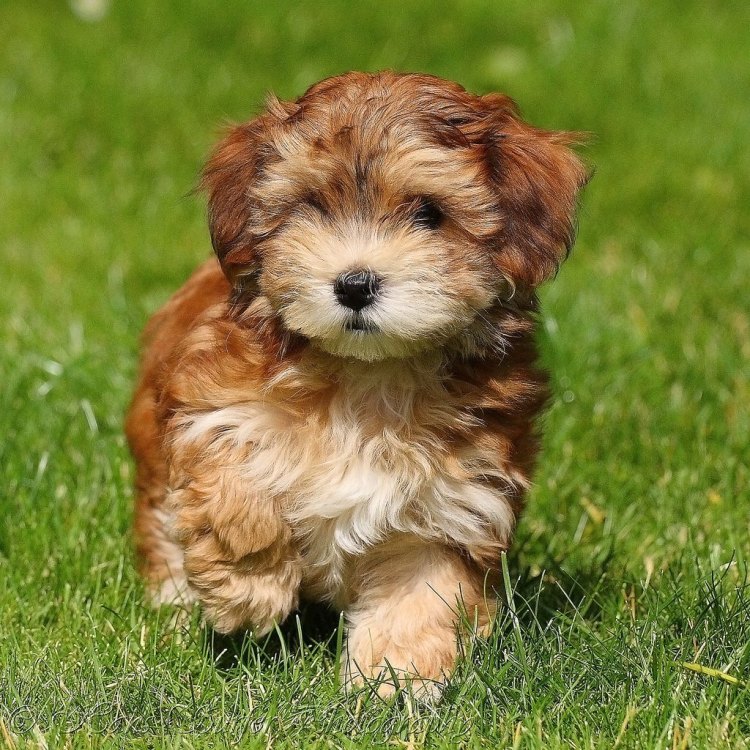
Canis lupus familiaris
The Adorable Havapoo: The Perfect Companion for a Lifetime
Meet the Havapoo, a charming and highly sought-after hybrid dog breed that combines the best qualities of two beloved breeds – the Havanese and the Poodle. This lovable and playful pup has captured the hearts of dog lovers all over the world, and for good reason. With its irresistible features and gentle personality, the Havapoo has become one of the most popular designer dogs in recent years.The Havapoo, also known as the Havadoodle or the Havanoodle, is an adorable, small-sized dog that typically weighs between 10-15 pounds as an adult, making it the perfect size for both apartment dwellers and suburban households PeaceOfAnimals.Com. Despite its petite frame, this breed is known for its surprisingly long lifespan of 12-16 years, which means you get to enjoy its delightful presence for a long time.
This charming breed is a result of crossbreeding between a Havanese and a Poodle, which both have a long history of being loving and loyal companion dogs. The Havanese, originally from Cuba, is known for its friendly and affectionate demeanor, while the Poodle, originating from Germany, is highly intelligent and easily trainable. It is no wonder that the combination of these two breeds has resulted in such a perfect little dog.
Like most dogs, the Havapoo reproduces sexually through live birth after mating. However, what sets this breed apart is its distinctive features, which are primarily attributed to its soft and curly coat. This coat is inherited from its Poodle parent, making it a hypoallergenic breed that produces minimal shedding, making it an ideal pet for people with allergies or those who don't want to deal with excessive fur. The Havapoo's coat comes in various colors, including white, cream, black, brown, silver, and apricot, with some pups sporting a blend of colors.
When it comes to its behavior, the Havapoo does not disappoint Halibut. This breed is known for being friendly, affectionate, and playful, making it the perfect companion for individuals and families alike. Its sweet and gentle nature makes it an excellent choice for households with children, as they tend to get along well with kids of all ages. The Havapoo is also highly adaptable and can thrive in various living conditions, making it a great companion for both active and laid-back households.
Interestingly, the Havapoo is a non-migratory breed, meaning it does not have a specific migration pattern. This makes it an ideal pet for people who move around a lot or those who travel frequently but still want to have a furry companion by their side. This breed is known for its adaptable and easy-going nature, making it a great fit for a variety of lifestyles.
In terms of social groups, Havapoos tend to form close-knit family units, bonding strongly with their humans. They thrive in a loving and nurturing environment and can suffer from separation anxiety if left alone for extended periods. This breed does not do well in isolation and prefers to be around people at all times. So, if you are someone who works from home or has a flexible schedule, a Havapoo may be the perfect furry companion for you.
One of the most distinctive features of the Havapoo is its soft and curly coat, which makes it stand out from other designer breeds. This coat requires regular maintenance to keep it in good condition, including brushing, trimming, and occasional grooming. The Havapoo is also prone to ear infections, so regular ear cleaning is a must. As with any dog breed, adequate exercise, a nutritious diet, and routine vet visits are essential for maintaining good health.
One cannot talk about the Havapoo without mentioning their adorable and charming personalities. These dogs are known for being incredibly affectionate, and they thrive on human attention and love. Their friendly and playful nature makes them the perfect companion for people of all ages, and they do well with other pets, making them an excellent addition to multi-pet households.
Despite their friendly nature, Havapoos are not known for being big barkers. However, like any other dog, they may bark when necessary, such as alerting their owners of potential intruders or when they are looking for attention or feel neglected. Training and socialization are crucial for this breed to ensure they don't develop any bad habits, such as excessive barking.
When it comes to threats or predators, the Havapoo has nothing to worry about, as they do not have any natural predators. This breed rarely shows any aggression and is a peaceful and easy-going companion, making it a great breed for first-time dog owners.
While the Havapoo is not considered a threatened or endangered breed, it is essential to note that many designer breeds are created for profit, and unethical breeding practices can result in health issues and behavioral problems. It is crucial to do thorough research and only get a Havapoo from a reputable breeder who has the health and well-being of the puppies as their top priority.
The impact of the Havapoo on the ecosystem is minimal, as it is a companion animal with no specific role in the wild or as a working dog. This breed brings joy and companionship to its owners, and its gentle nature makes it a great therapy dog. The Havapoo is a great choice for individuals or families who are looking for a loyal and loving companion that doesn't require a lot of outdoor space or excessive grooming.
In conclusion, the Havapoo is an adorable and charming hybrid dog breed with a lot of love to give. With its soft and curly coat, friendly personality, and low-shedding coat, it has captured the hearts of dog lovers everywhere. This breed's adaptable and easy-going nature makes it a fantastic pet for individuals, families, and even those who travel frequently. So, if you are looking for a furry companion that will bring joy and love into your life for years to come, the Havapoo may just be the perfect match for you.

The Adorable Havapoo: Characteristics, History, and Care Guide
Disclaimer: The content provided is for informational purposes only. We cannot guarantee the accuracy of the information on this page 100%. All information provided here may change without prior notice.

